Comparative Simulation Analysis of Selected Medium and High Voltage Surge Protection Devices
Abstract
:1. Introduction and Principle of Operation of Selected Surge Protection Devices
2. Materials and Methods
3. Results
4. Discussion
5. Conclusions
Author Contributions
Funding
Institutional Review Board Statement
Informed Consent Statement
Data Availability Statement
Conflicts of Interest
References
- Ohtaka, T.; Iwata, M.; Tanaka, S.; Goda, Y. Development of an EMTP simulation model of arcing horns interrupting fault current. IEEE Trans. Power Deliv. 2010, 25, 2017–2024. [Google Scholar] [CrossRef]
- Hemapala, K.; Gnana Swathika, O.; Dharmadasa, K. Techno-economic feasibility of lightning protection of overhead transmission line with multi-chamber insulator arrestors. Dev. Eng. 2018, 3, 100–116. [Google Scholar] [CrossRef]
- Qiao, X.; Zhang, Z.; Jiang, X.; Sundararajan, R.; Ma, X.; Li, X. AC failure voltage of iced and contaminated composite insulators in different natural environments. Int. J. Electr. Power Energy Syst. 2020, 120, 105993. [Google Scholar] [CrossRef]
- He, J.; Wang, X.; Yu, Z.; Zeng, R. Statistical analysis on lightning performance of transmission lines in several regions of China. IEEE Trans. Power Deliv. 2015, 30, 1543–1551. [Google Scholar] [CrossRef]
- Meng, P.; Yuan, C.; Xu, H.; Wan, S.; Xie, Q.; He, J.; Zhao, H.; Hu, J.; He, J. Improving the protective effect of surge arresters by optimizing the electrical property of ZnO varistors. Electr. Power Syst. Res. 2020, 178, 106041. [Google Scholar] [CrossRef]
- Wang, J.; Wang, S.; Cai, L.; Lu, D.; Li, Q.; Zhou, M.; Fan, Y. Observation of induced voltage at the terminal of 10 kV distribution line by nearby triggered lightning. IEEE Trans. Power Deliv. 2020, 35, 1968–1976. [Google Scholar] [CrossRef]
- Gu, S.; Wan, S.; Wang, J.; Chen, J.; Li, T. Development and application of ±500 kV DC transmission line arrester in China power grid. IEEE Trans. Power Deliv. 2018, 33, 209–217. [Google Scholar] [CrossRef]
- Jiang, Z.; Wu, W.; Wang, B.; Xie, P.; Li, H.; Lin, F. Design and test of 500-kV lightning protection insulator. IEEE Access 2019, 7, 135957–135963. [Google Scholar] [CrossRef]
- Wang, B.; Lu, J.; Fang, Z.; Jiang, Z.; Hu, J. Development of anti-thunder composite insulator for distribution line. IEEJ Trans. Electr. Electron. Eng. 2019, 15, 100–107. [Google Scholar] [CrossRef]
- Podporkin, G.V.; Sivaev, A.D. Lightning protection of distribution lines by long flashover arresters (LFA). IEEE Trans. Power Deliv. 1998, 13, 814–823. [Google Scholar] [CrossRef]
- Borecki, M.; Sobolewski, K. An elimination method for an emergency situation in Gas-insulated switchgear in power grids. IEEE Trans. Power Deliv. 2021, 36, 3724–3732. [Google Scholar] [CrossRef]
- Wang, J.F.; Wu, D. Development of an arc-extinguishing lightning protection gap for 35 kV overhead power lines. IET Gen. Transm. Distrib. 2017, 11, 2897–2901. [Google Scholar] [CrossRef]
- Hoduń, P.; Borecki, M. Reliability Assessment of MV Power Connections. Energies 2021, 14, 6965. [Google Scholar] [CrossRef]
- Qiao, X.; Zhang, Z.; Sundararajan, R.; Jiang, X.; Hu, J.; Fang, Z. The failure arc paths of the novel device combining an arrester and an insulator under different pollution levels. Int. J. Electr. Power Energy Syst. 2021, 125, 106549. [Google Scholar] [CrossRef]
- Zhang, Z.; Qiao, X.; Zhang, Y.; Tian, L.; Zhang, D.; Jiang, X. AC flashover performance of different shed configurations of composite insulators under fan-shaped non-uniform pollution. IET High Volt. 2018, 3, 199–206. [Google Scholar] [CrossRef]
- He, L.; Gorur, R.S. Source strength impact analysis on polymer insulator flashover under contaminated conditions and a comparison with porcelain. IEEE Trans. Dielectr. Electr. Insul. 2016, 23, 2189–2195. [Google Scholar] [CrossRef]
- Qiao, X.; Zhang, Z.; Jiang, X.; Li, X.; He, Y. A new evaluation method of aging properties for silicon rubber material based on microscopic images. IEEE Access 2019, 7, 15162–15169. [Google Scholar] [CrossRef]
- PN-EN IEC 60099-8:2018-04; Ograniczniki przepięć. Część 8: Ograniczniki przepięć z tlenków metali z zewnętrznymi iskiernikami szeregowymi (EGLA) do napowietrznych przesyłowych i rozdzielczych linii napięcia przemiennego w sieciach powyżej 1 kV. Available online: https://sklep.pkn.pl/pn-en-iec-60099-8-2018-04e.html (accessed on 7 June 2022).
- Podporkin, G.V.; Pilshchikov, V.E.; Sivaev, A.D. On the use of surge arresters for lightning protection of 6–10 kV overhead lines. Cable-News 2009, 23–27. [Google Scholar]
- Chalilow, F.H. Protection of 6–35 kV Networks from Surges; Energoatomizdat: St. Petersburg, Russia, 2002; 260p. [Google Scholar]
- Borecki, M.; Ciuba, M.; Kharchenko, Y.; Khanas, Y. Main aspects influencing the evaluation of atmospheric overvoltages in high-voltage networks. Bull. Pol. Acad. Sci. Tech. Sci. 2021, 69, e135838. [Google Scholar]
- Borecki, M. Risk level analysis in the selected (initial) stage of the project life cycle. Manag. Prod. Eng. Rev. 2020, 11, 104–112. [Google Scholar]
- Borecki, M. A Proposed new approach for the assessment of selected operating conditions of the high voltage cable line. Energies 2020, 13, 5275. [Google Scholar] [CrossRef]
- Borecki, M.; Ciuba, M.; Kharchenko, Y.; Khanas, Y. Substation reliability evaluation in the context of the stability prediction of power grids. Bull. Pol. Acad. Sci. Tech. Sci. 2020, 68, 769–776. [Google Scholar]
- Podporkin, G.V.; En’kin, E.Y.; Pil’shchikov, V.E. The Development of Multichamber Arresters. Russ. Electr. Eng. 2013, 84, 1–5. [Google Scholar] [CrossRef]

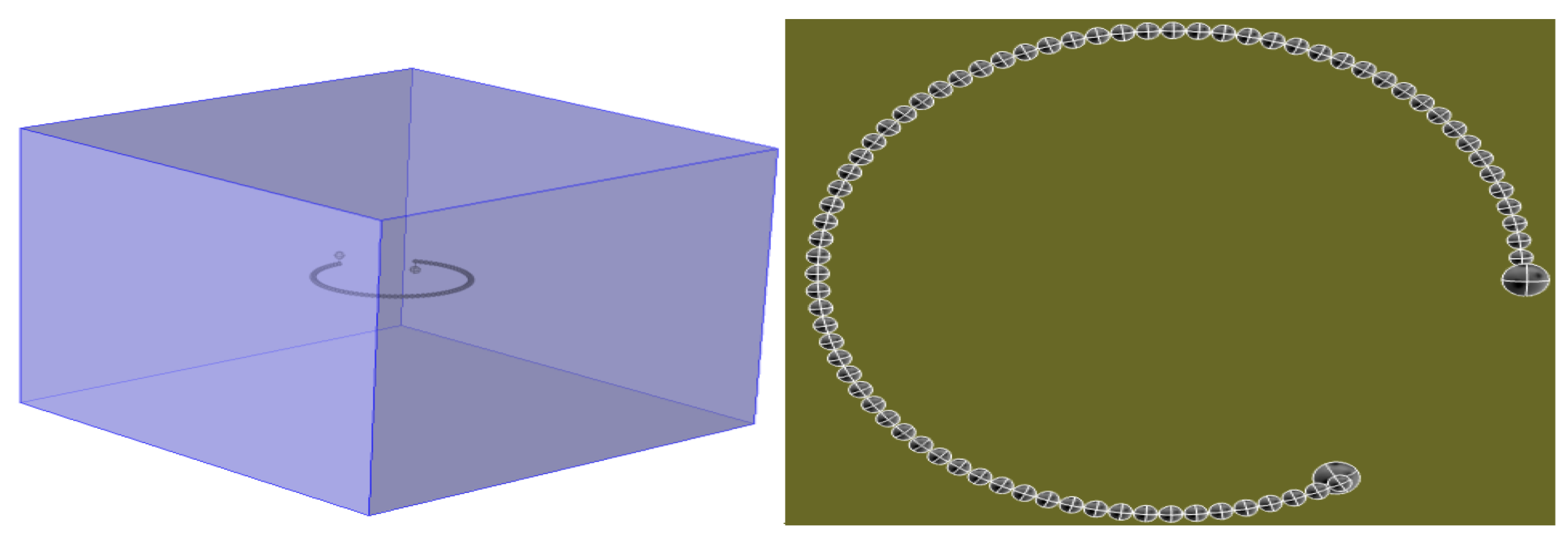
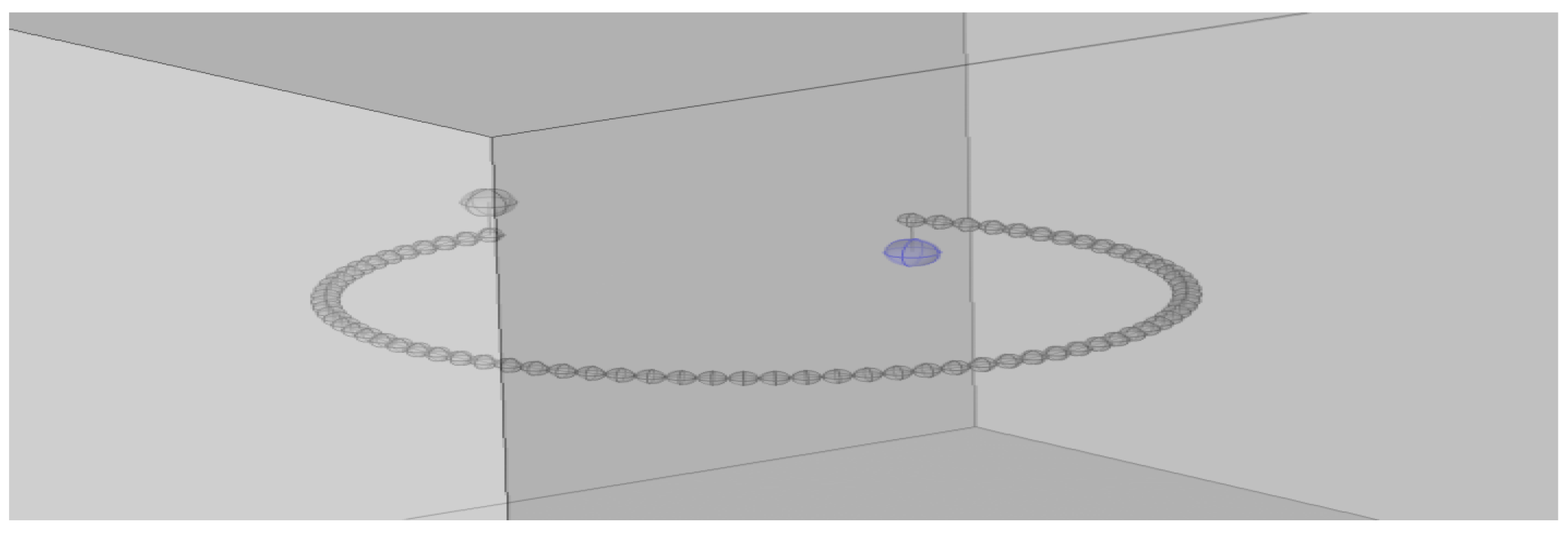
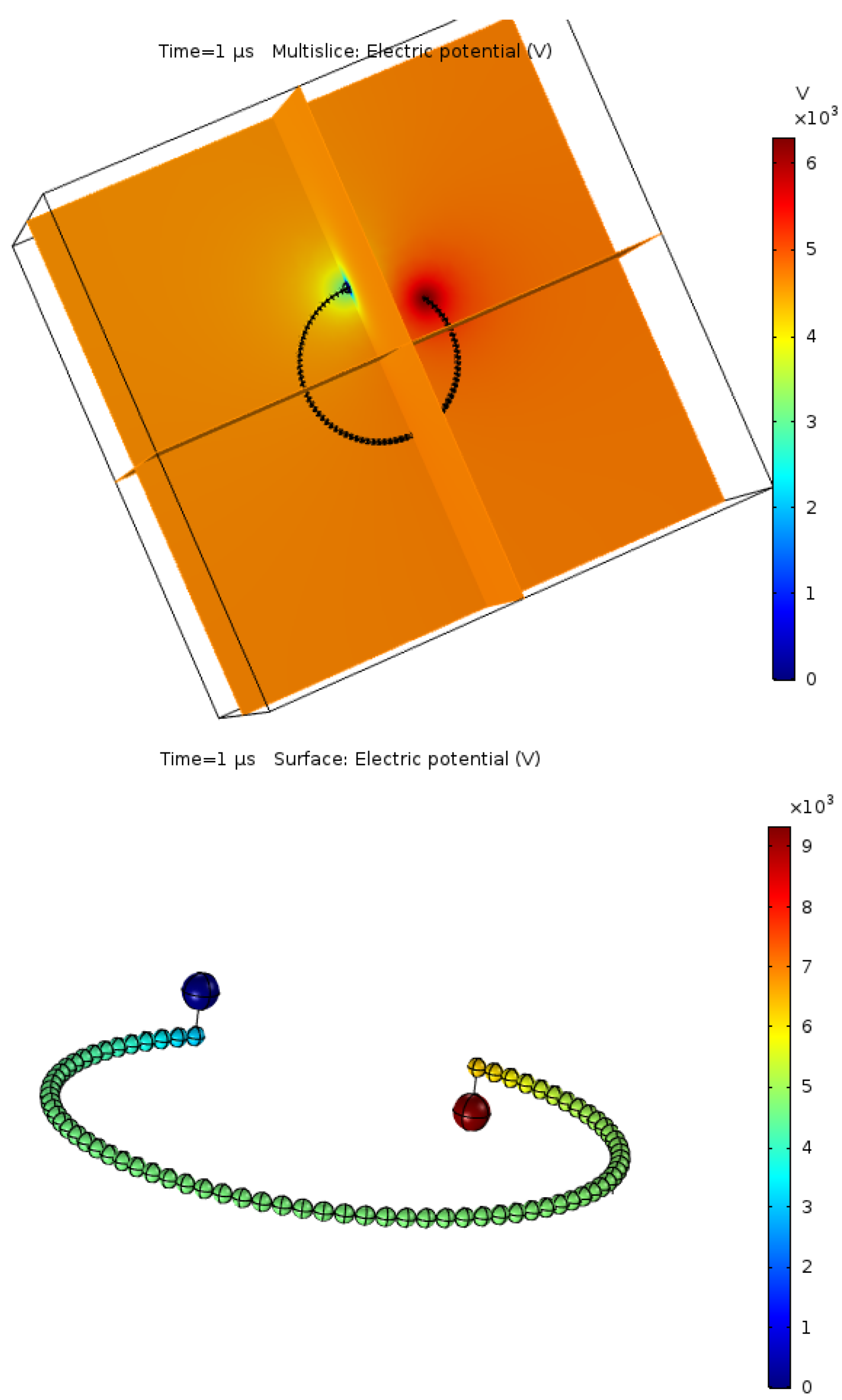
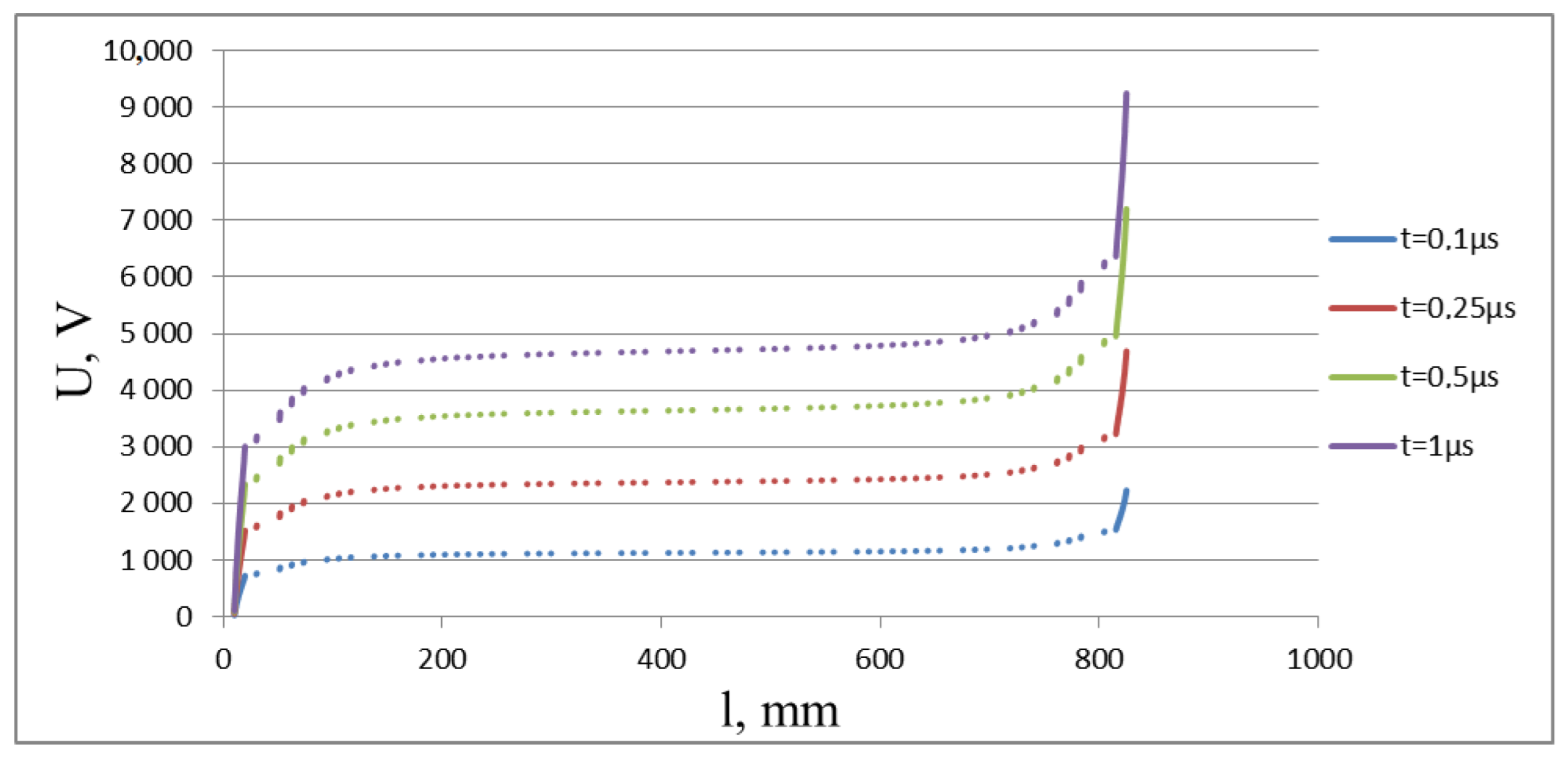
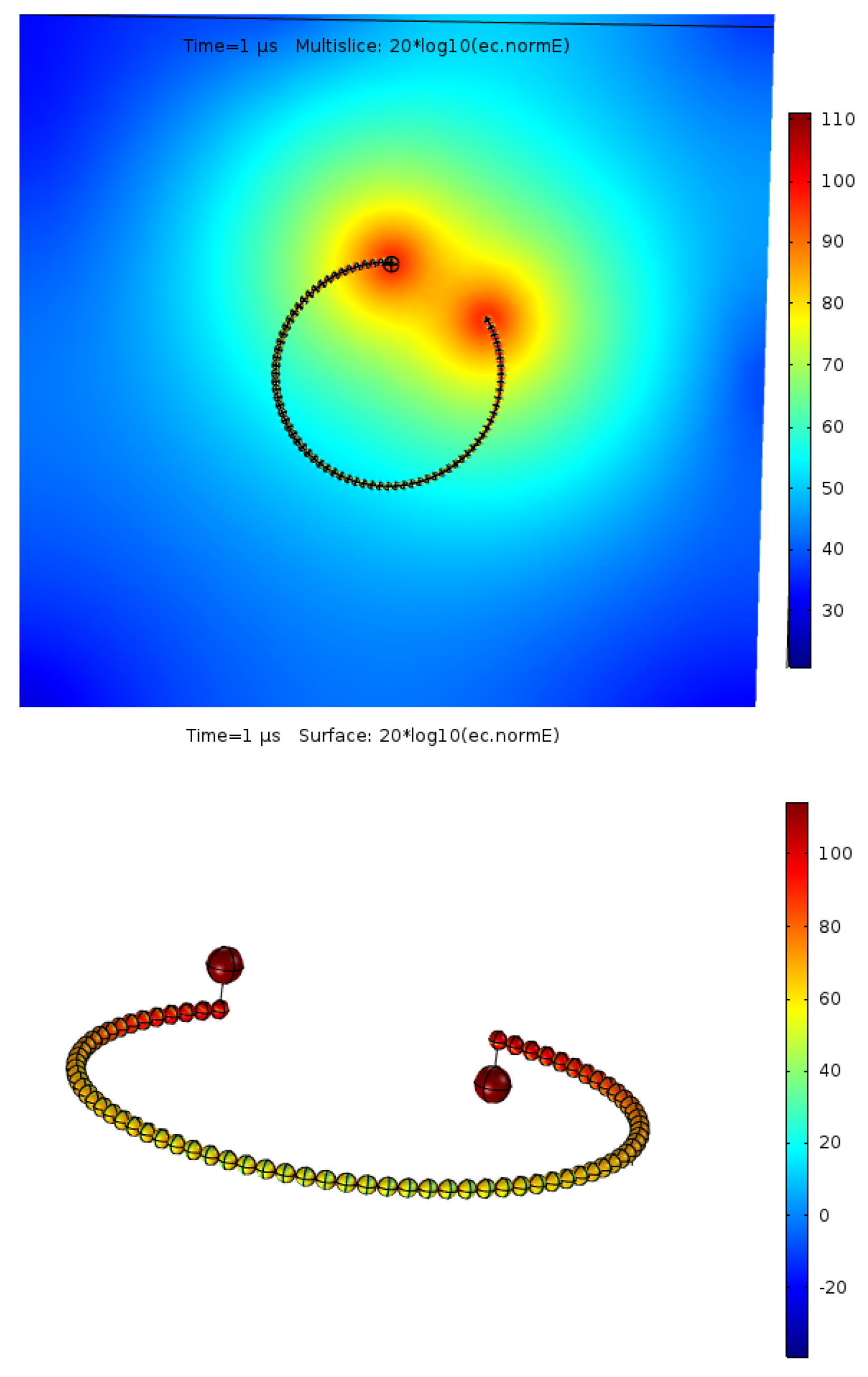

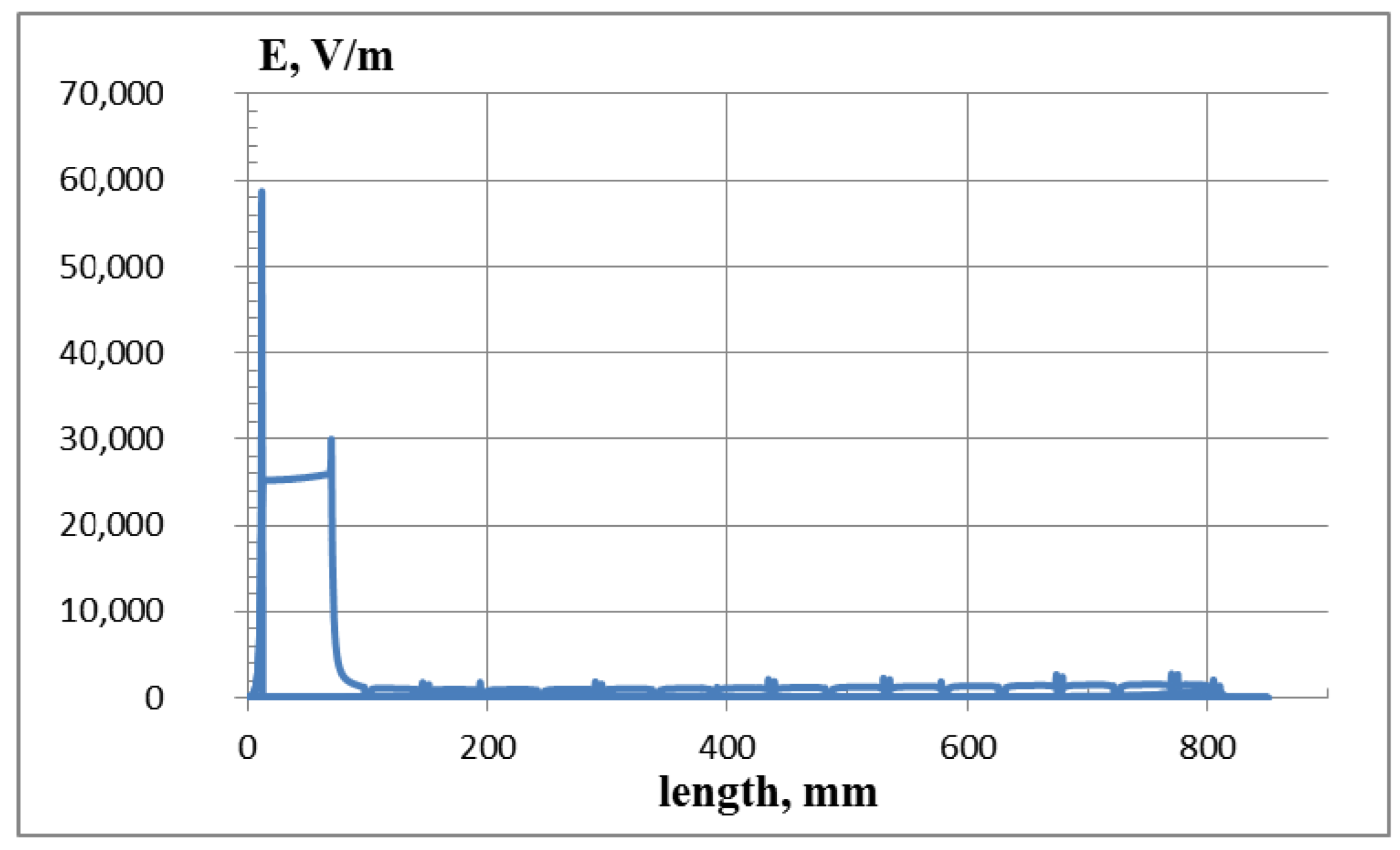

Publisher’s Note: MDPI stays neutral with regard to jurisdictional claims in published maps and institutional affiliations. |
© 2022 by the authors. Licensee MDPI, Basel, Switzerland. This article is an open access article distributed under the terms and conditions of the Creative Commons Attribution (CC BY) license (https://creativecommons.org/licenses/by/4.0/).
Share and Cite
Borecki, M.; Kharchenko, Y. Comparative Simulation Analysis of Selected Medium and High Voltage Surge Protection Devices. Energies 2022, 15, 4326. https://doi.org/10.3390/en15124326
Borecki M, Kharchenko Y. Comparative Simulation Analysis of Selected Medium and High Voltage Surge Protection Devices. Energies. 2022; 15(12):4326. https://doi.org/10.3390/en15124326
Chicago/Turabian StyleBorecki, Michał, and Yevhen Kharchenko. 2022. "Comparative Simulation Analysis of Selected Medium and High Voltage Surge Protection Devices" Energies 15, no. 12: 4326. https://doi.org/10.3390/en15124326
APA StyleBorecki, M., & Kharchenko, Y. (2022). Comparative Simulation Analysis of Selected Medium and High Voltage Surge Protection Devices. Energies, 15(12), 4326. https://doi.org/10.3390/en15124326





